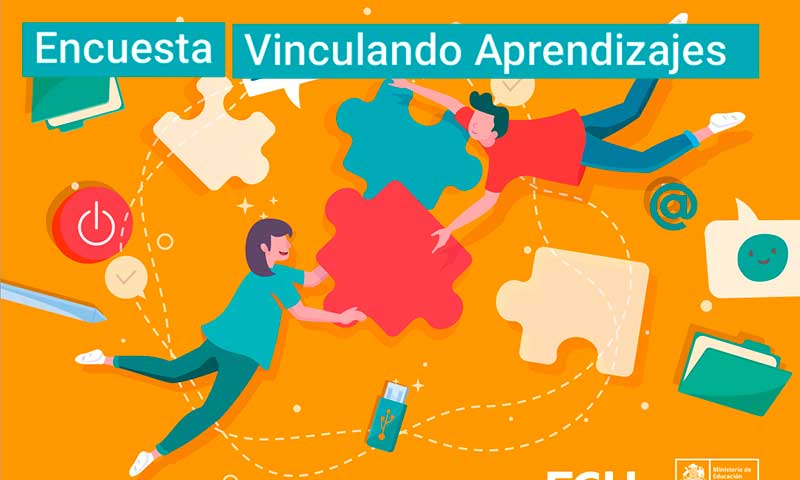Synchronous or asynchronous mode?
The pandemic has changed the way classes are taught in schools and high schools and teachers have had to learn to carry out their educational work through a screen. When the class is online and the teacher connects at the same time as his students, it is spoken of synchronous mode (live). Meanwhile, when the teacher implements educational content for the student to develop in a different chronological time, it is called asynchronous mode.
Linking Learning Survey
Which of these modalities is the one that predominates in educational establishments? Between April 13 and May 14, the educarchile portal, an initiative of Fundación Chile and the Ministry of Education, applied the 2nd Survey Linking Learning, which included teachers, preschool educators, managers, assistants and professionals of education across the country.
One of the main findings of the survey, which had 1,438 responses, was that the majority of teachers who are taking their classes online are doing so in synchronous mode (77%). Of this percentage, 60% use the synchronous mode with the entire course, and 17% with groups of students.
Only 10% in asynchronous mode
On the other hand, asynchronous classes, which require the educator to develop educational resources specially designed for this modality such as audiovisual capsules and interactive games and for the student to organize their time to carry out the learning process, have been carried out less frequently: only 10% indicate that it is the modality that they use the most.
“both modalities have advantages”
For Marco Ávila, teacher and Content Coordinator at educarchile, the circumstances are not normal and, therefore, “in this state of true emergency, getting girls, boys and young people to learn in either of the two modalities is already an achievement that must In his opinion, both modalities have advantages and allow the development of different skills, which must be taken into account when planning learning activities to implement the prioritized curriculum “.
“For example, in the synchronous mode, they can communicate ideas, argue them, and present prototypes, and in the asynchronous mode it is possible for students to autonomously deploy competencies associated with research, argumentation, and hypothesis development. The asynchronous mode makes us think that in this new approach used there are some answers on how to motivate learning and how to reach high levels in the development of skills. We have seen how, after the presentation of a brief introductory capsule by a teacher, a child investigates, selects information, arranges ideas, exposes them and argues a hypothesis. Thus, that student autonomously faces learning. I would see this period as one of infinite gain for the school experience, although with high levels of stress, ”says Marco Ávila.
In an eventual overcoming of the pandemic
Now, putting ourselves in an eventual scenario of overcoming the pandemic, 53% of those surveyed would like to continue creating resources for synchronous and asynchronous online learning such as recorded classes, online guides, or capsules. This is undoubtedly an indicator that, despite the high stress situation, educational innovation is an interest of teachers that must be promoted and supported through a relevant continuing training offer.
This result is consistent with the training needs for 2021: 64% indicate as a training need adequate teaching / learning methodologies for a hybrid format and 61% consider that they require support in the management of applications and / or tools to implement their classes to distance.
Linking Learnings
The purpose of the 2nd Linking Learning Survey was to find out first-hand the specific realities of the different school communities, as well as their needs in the context of a pandemic, and to use this feedback when designing tools and resources to support education. educational work that is available openly and free of charge on the oldest educational portal in the country.
The survey was answered by 79% of women and 20% of men, a population that, for the most part, lives in the Metropolitan Region (23%), followed by the Atacama Region (21%) and the Valparaíso Region (10 %). Regarding the type of establishment, 39% indicated working in a municipal establishment, 28% in particular subsidized and 22% in an establishment managed by a Local Education Service, that is, they had a majority participation of the school world that receives state contributions.
Where can I see the results of the survey?
The report with the results of the 2nd Survey Linking Learning It is available from this link for download.
–

